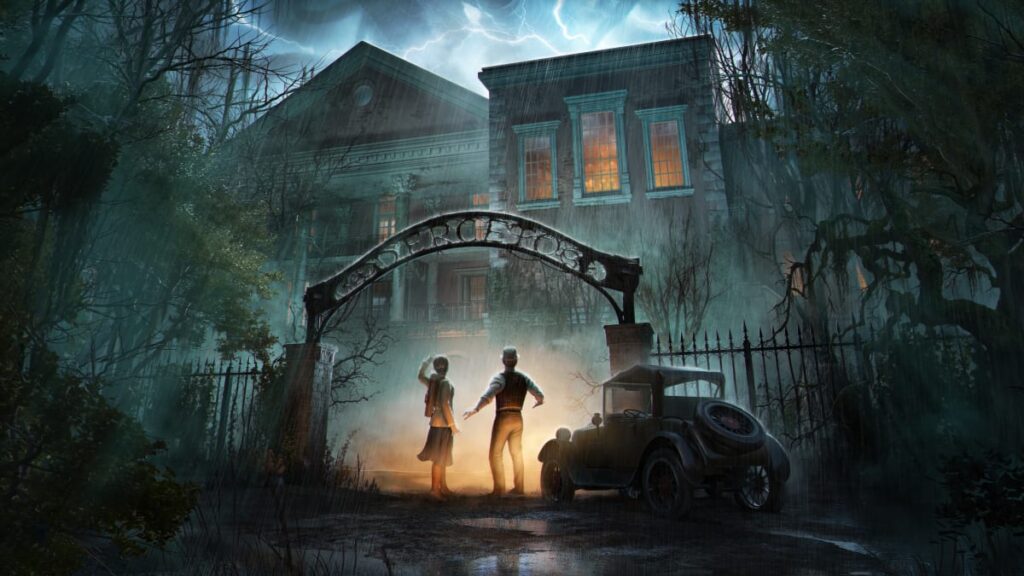The Life is Strange series, developed by Dontnod Entertainment and Deck Nine Games, represents a groundbreaking endeavor in the video game industry. Blending interactive storytelling with deeply resonant themes, the series offers players an immersive experience that transcends traditional gaming boundaries. At its core, Life is Strange explores complex issues such as coming of age, LGBTQIA+ relationships, and alternative culture, presenting them in a way that is both intellectually engaging and politically charged. This article delves into the intricacies of each game, examining the mechanics, characters, and overarching themes that have made Life is Strange a cultural phenomenon.

1. Life is Strange (2015)
Game Mechanics and Structure
Life is Strange is an episodic graphic adventure game, consisting of five episodes released periodically. The game mechanics center around narrative choices and their consequences, a hallmark of the series. Players control Maxine “Max” Caulfield, a high school senior who discovers she has the ability to rewind time. This mechanic allows players to alter the course of events, with each decision branching into various outcomes that affect the storyline and character relationships.
The game incorporates traditional adventure mechanics, such as exploration, puzzle-solving, and dialogue trees. Max’s ability to rewind time adds a unique layer to these interactions, allowing players to experiment with different choices and observe their immediate consequences before committing to a decision. This mechanic not only enhances player agency but also reinforces the game’s themes of regret and the complexity of human relationships.
Characters
Max Caulfield: The protagonist, a photography student who grapples with her newfound time-manipulation abilities. Max is introspective, empathetic, and somewhat introverted, reflecting a relatable coming-of-age journey.
Chloe Price: Max’s estranged best friend, characterized by her rebellious spirit and punk aesthetic. Chloe’s complex relationship with Max drives much of the narrative tension and emotional depth.
Rachel Amber: Although absent for most of the game, Rachel’s disappearance is a central plot element, influencing the actions and motivations of other characters.
Kate Marsh: A fellow student who becomes a focal point for discussions about bullying, mental health, and the consequences of online harassment.




Themes
Coming of Age: Max’s journey from adolescence to adulthood is marked by her struggle to understand her powers and the responsibility that comes with them. The game’s setting in a high school environment underscores typical coming-of-age dilemmas, such as identity, friendship, and future aspirations.
LGBTQIA+ Relationships: The nuanced portrayal of Max and Chloe’s relationship stands out as one of the most significant representations of LGBTQIA+ themes in video games. Their bond, which can evolve into a romantic relationship based on player choices, is depicted with authenticity and depth, challenging conventional gaming narratives.
Alternative Culture: The game’s setting in the fictional town of Arcadia Bay, with its distinct blend of coastal and rural aesthetics, serves as a backdrop for exploring alternative lifestyles. Characters like Chloe embody punk subculture, while others represent various facets of countercultural movements.
Story Possibilities and Analysis
The narrative of Life is Strange is heavily influenced by player decisions, leading to multiple possible outcomes and variations in the story. Key choices include:
- Kate Marsh’s Fate: Players must decide how to support Kate through her struggles with bullying and harassment. The outcome can result in Kate surviving a suicide attempt or tragically ending her life. This choice highlights the importance of empathy and the impact of words and actions on others.
- Chloe’s Relationship: Max’s decisions regarding Chloe can either strengthen their bond or create further rifts. The possibility of a romantic relationship between Max and Chloe adds layers of emotional complexity and highlights themes of love and acceptance.
- The Final Decision: The game’s climax forces players to make a heart-wrenching choice between saving Chloe or sacrificing Arcadia Bay to prevent a catastrophic storm. This decision encapsulates the game’s exploration of morality, sacrifice, and the ripple effects of personal choices.
Political and Social Commentary
Life is Strange tackles numerous social issues, from bullying and mental health to environmental concerns. The game does not shy away from depicting the harsh realities of these issues, encouraging players to reflect on their own values and societal norms. The time-rewind mechanic serves as a metaphor for the desire to correct past mistakes, emphasizing themes of regret, redemption, and the impact of individual actions on the collective future.
2. Life is Strange: Before the Storm (2017)
Game Mechanics and Structure
Before the Storm is a prequel to the original game, focusing on Chloe Price before Max’s return to Arcadia Bay. Unlike its predecessor, this game does not feature supernatural abilities but instead relies on a conversational “Backtalk” mechanic, where players can engage in verbal confrontations to influence outcomes.
The game’s mechanics emphasize choice and consequence, similar to its predecessor. Players navigate through various environments, interact with characters, and make decisions that impact the narrative. The absence of supernatural powers places a greater emphasis on character development and emotional storytelling.
Characters
Chloe Price: The protagonist, whose story delves deeper into her troubled past and the events leading up to the original game. This installment offers a more intimate look at Chloe’s vulnerabilities and her tumultuous relationship with her family.
Rachel Amber: A charismatic and enigmatic character whose relationship with Chloe is central to the narrative. Rachel’s presence provides insight into her significant impact on Chloe and the broader community of Arcadia Bay.
Frank Bowers: A local drug dealer who becomes a key figure in Chloe’s life, revealing the darker aspects of Arcadia Bay’s underbelly.
David Madsen: Chloe’s stepfather, whose strict and often antagonistic relationship with Chloe adds tension to the story.


Themes
Coming of Age: Chloe’s journey in Before the Storm is marked by her struggle to find her place in a world that seems indifferent to her pain. The game’s exploration of grief, loss, and self-discovery highlights the tumultuous path to adulthood.
LGBTQIA+ Relationships: The bond between Chloe and Rachel is portrayed with emotional depth and complexity. Their relationship, which can develop into a romantic one, is a poignant exploration of love, identity, and the search for belonging.
Alternative Culture: Chloe’s punk persona and rebellious nature are further explored, emphasizing themes of defiance and non-conformity. The game’s soundtrack, featuring indie and alternative music, enhances the immersive experience and underscores the cultural milieu.
Story Possibilities and Analysis
Before the Storm provides players with several significant choices that shape the narrative and character relationships:
- Chloe and Rachel’s Relationship: The depth and nature of Chloe and Rachel’s relationship are determined by player choices, allowing for a spectrum of outcomes from close friendship to romantic involvement. This dynamic explores themes of love, trust, and vulnerability.
- Family Dynamics: Chloe’s interactions with her mother Joyce and stepfather David can lead to different levels of reconciliation or conflict. These choices reflect the struggles of blended families and the challenges of communication and understanding.
- Rachel’s Revelation: A critical plot point involves Rachel discovering a family secret, which profoundly affects her and Chloe. How players navigate this revelation and support Rachel can alter their bond and the story’s direction.
Political and Social Commentary
Before the Storm continues the series’ tradition of addressing pressing social issues. The game delves into topics such as domestic abuse, the impact of parental absence, and the struggles of marginalized youth. By focusing on character-driven narratives, the game invites players to empathize with the characters’ experiences and reflect on broader societal issues.
3. Life is Strange 2 (2018)
Game Mechanics and Structure
Life is Strange 2 introduces a new set of protagonists, brothers Sean and Daniel Diaz, and shifts the focus to a road trip narrative. The game retains the episodic format and choice-based mechanics, with the addition of managing Daniel’s developing telekinetic powers. Players’ decisions not only influence the immediate storyline but also shape Daniel’s moral compass and behavior.
The gameplay combines exploration, dialogue choices, and decision-making with the unique challenge of guiding a younger sibling. The player’s choices impact not only Sean’s path but also Daniel’s development and ethical outlook.
Characters
Sean Diaz: The older brother and main playable character, Sean is thrust into a protective role following a tragic event. His journey is one of responsibility, sacrifice, and the challenges of guiding his younger brother.
Daniel Diaz: The younger brother with telekinetic abilities. Daniel’s development and the bond between the brothers are central to the narrative, with players influencing his growth through their choices.
Brody Holloway: A kind-hearted drifter who helps Sean and Daniel early in their journey, representing the kindness of strangers.
Cassidy and Finn: Members of a drifter community who become significant figures in Sean and Daniel’s lives, offering different perspectives on freedom and rebellion.




Themes
Coming of Age: The Diaz brothers’ journey is a powerful exploration of growing up under extraordinary circumstances. Sean’s transition from a typical teenager to a surrogate parent highlights themes of maturity, resilience, and the loss of innocence.
LGBTQIA+ Relationships: The game includes significant LGBTQIA+ representation through characters like Finn and Cassidy, who offer diverse perspectives on love and identity. These relationships are woven into the narrative, providing players with meaningful choices that impact the story.
Alternative Culture: The game’s depiction of various subcultures, including the hobo lifestyle and communal living, broadens its exploration of alternative ways of life. These elements challenge conventional societal norms and highlight the diversity of human experiences.
Story Possibilities and Analysis
Life is Strange 2 presents players with numerous pivotal choices that shape the brothers’ journey and their relationship:
- Daniel’s Morality: Sean’s guidance and the player’s decisions influence Daniel’s moral development, leading to different outcomes based on whether he learns to control his powers responsibly or uses them recklessly.
- Community and Belonging: The brothers encounter various communities, each offering different philosophies and ways of life. Players can choose to embrace or reject these influences, affecting their sense of belonging and the narrative’s direction.
- Final Destination: The game’s conclusion offers multiple endings based on the brothers’ decisions and moral paths. These endings range from achieving freedom and a new life to facing consequences for their actions, each providing a unique resolution to their journey.
Political and Social Commentary
Life is Strange 2 is explicitly political, addressing issues such as immigration, racism, and police brutality. The game’s narrative reflects real-world tensions and injustices, encouraging players to engage with these topics critically. The brothers’ journey across the United States serves as a microcosm of broader societal issues, making their story both personal and universally relevant.
4. Life is Strange: True Colors (2021)
Game Mechanics and Structure
True Colors introduces Alex Chen, a young woman with the ability to experience and manipulate others’ emotions. The game continues the episodic format but offers a more cohesive and continuous narrative experience. Alex’s power, referred to as “Empathy,” allows players to delve into the emotional states of other characters, influencing the storyline and relationships.
The game’s mechanics focus on exploration, dialogue choices, and the use of Alex’s empathic abilities to uncover hidden truths and resolve conflicts. This unique power adds a new dimension to the narrative, emphasizing the importance of emotional intelligence.
Characters
Alex Chen: The protagonist, whose journey of self-discovery and reconciliation with her past drives the narrative. Alex’s empathetic abilities and her search for belonging form the emotional core of the game.
Gabe Chen: Alex’s brother, whose untimely death sets off the main plot. Gabe’s influence and the mystery surrounding his death are central to Alex’s quest.
Steph Gingrich and Ryan Lucan: Key characters who form Alex’s primary support system. Both characters offer potential romantic relationships, allowing players to explore different dynamics and deepen their connections.
Charlotte Harmon: A local artist and single mother who becomes a close friend to Alex, adding layers to the community’s interconnected stories.
Eleanor Lethe: An elderly woman suffering from memory loss, whose relationship with Alex explores themes of care and vulnerability.





Themes
Coming of Age: Alex’s story is a profound exploration of identity, trauma, and the quest for self-acceptance. Her journey reflects the challenges of understanding one’s emotions and finding a place in the world.
LGBTQIA+ Relationships: True Colors offers rich representation of LGBTQIA+ themes, particularly through the character of Steph, who is openly queer. The game’s approach to these relationships is nuanced and heartfelt, providing players with authentic and meaningful choices.
Alternative Culture: The setting of Haven Springs, a small town with a tight-knit community, provides a unique backdrop for exploring themes of belonging and community. The game’s focus on music, art, and alternative lifestyles enriches its cultural tapestry.
Story Possibilities and Analysis
True Colors features several critical decisions that shape Alex’s journey and her relationships within Haven Springs:
- Uncovering the Truth: Alex’s investigation into Gabe’s death involves uncovering secrets and making alliances. Players’ choices affect the level of trust and support Alex receives from the community.
- Romantic Relationships: Players can choose to pursue a romantic relationship with either Steph or Ryan, each path offering unique storylines and emotional depth. These relationships highlight themes of love, trust, and self-discovery.
- Community Impact: Alex’s decisions influence the overall well-being of Haven Springs, including pivotal moments where she can stand up for friends or make sacrifices for the greater good. These choices reflect themes of community, solidarity, and personal responsibility.
Political and Social Commentary
True Colors addresses issues such as mental health, corporate exploitation, and the power of community. Alex’s empathetic abilities serve as a metaphor for the importance of understanding and compassion in overcoming personal and societal challenges. The game’s narrative encourages players to reflect on the impact of their actions and the value of emotional intelligence.

Cultural Impact and Legacy
The Life is Strange series has had a profound impact on both the gaming industry and broader cultural conversations. Its commitment to exploring challenging themes with sensitivity and depth has set a new standard for narrative-driven games. The series’ portrayal of LGBTQIA+ relationships, in particular, has been widely praised for its authenticity and emotional resonance.
Representation and Diversity
One of the most significant achievements of the Life is Strange series is its representation of diverse characters and experiences. The games offer a platform for marginalized voices, challenging stereotypes and providing players with a more inclusive gaming experience. By focusing on underrepresented groups, the series fosters empathy and understanding, promoting a more equitable and just society.
The Importance of Player Choice
The choice-based mechanics of the Life is Strange series empower players to shape the narrative, making their decisions feel meaningful and impactful. This interactivity enhances the emotional engagement and investment in the characters’ journeys, making the stories deeply personal and resonant.

Why It Matters So Much In The Game Industry
The Life is Strange series stands as a testament to the power of storytelling in video games. Its exploration of coming of age, LGBTQIA+ relationships, and alternative culture, combined with its commitment to addressing social and political issues, makes it a groundbreaking and influential work. As the series continues to evolve, it remains a beacon of innovation and empathy, challenging players to reflect on their own lives and the world around them.









